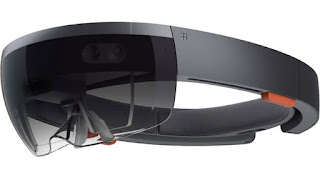Employee Training Transformation In This Digital Age
In this digital world, we have been spending our efforts to train machines and make them intelligent. While focusing on machines to improve productivity, predictability and sustainability, we are challenged with an important aspect – change. Making humans aware of the change, understand the change and equip them to handle the change.
We have done enough automation at the IT infrastructure level, application level and process level. Impacted workforce are either knowledge workers or who sits at the desk executing so called mundane repeatable tasks. They could re-skill themselves on other expert level tasks, and continue their journey. There are enough training available to up-skill and re-skill the desk-side workers.
In the age of Fourth Industrial Revolution aided by digital transformation, what about the workers at the manufacturing floor, lob technicians at a healthcare firm, seasonal workers etc. directly impacted by this change?
Attrition of employees in this segment is very high compared to other areas. In some organizations, this section is served by contract workers and seasonal hires that increases the fluidity even higher. Though machines are becoming more mobile and intelligent, they have not even remotely closer to the finer motor skills needed for these type of jobs.
Whenever there is a churn happens, the productivity dips, often compensated by other workers working overtime, until the new resource picks up the speed. Also rarely there is a well written operational handbook out there, nor time for the new resource to go through the same. It is mostly on-the-job training.
I always used to think, in this digital era, is there an easy way to make the training stick and effective. We used digital twins, Virtual Reality and Augmented Reality to understand and solve complex problems in machines. Why can’t we use something similar to train the workers?
Then I came across an article in MIT Sloan Review couple of days back - Boston based Waypoint Labs has figured out a solution for this. I was amazed by the solution. This is a classic example of business problem solving.
Three distinguished technologists, who call themselves as “hacker nerds with brilliant core” came out with this brilliant idea of utilizing Augmented Reality (AR). Their software works along with Microsoft HoloLens to create on the job three dimensional training material. You can view the product video here.
How does it work?
Here is an excerpt from the MIT Sloan article.
In my opinion this and possibly similar solutions out there in the market solves several problems for organizations.
I would like to quote here CEO of Waypoint Labs, as referenced in the article –
Workers wear the headsets, and Waypoint’s software chronicles their movements. This allows workers to document their process in real time. With the headset on, workers can behave as if they’re training someone. Waypoint software monitors them audio-visually and spatially, in three dimensions. It captures this information through a knowledge processing engine and converts it into structured data into a format chosen by the customer. That could be an interactive website with photos and videos, Microsoft Word documents with photos to be used as training materials, or an interactive augmented reality training where trainees wear the same type of headset used to record the information.
In my opinion this and possibly similar solutions out there in the market solves several problems for organizations.
- Process understanding of individual business operations processes – This is often hardwired into worker’s brain, than as a documented process. This is a major challenge in digital transformation initiatives leading to trial and errors, when executing a business case.
- Comes in handy to quickly on board contractors in businesses where there is seasonal surge
- Ease new hires into "attrition heavy" business operations
- Mergers and Acquisitions (M&A), where cross training and/or consolidation happens
- Opportunity for new business value creation, future revenue opportunity by integrating with Artificial Intelligence (AI) and Internet of Things (IoT)
I would like to quote here CEO of Waypoint Labs, as referenced in the article –
“Our mission was simple: How can we use AR to make people’s jobs better? Not for entertainment: We want to use AR to empower people and increase productivity,”I think, it is a great mission. What do you think? Have you come across similar solutions? If so, could you please share?






Comments
Post a Comment